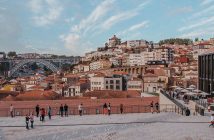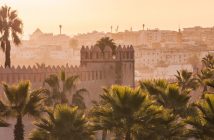Nestled in the shadows of the Langeberg and Outeniqua mountains, 30 minutes from Mossel Bay on South Africa’s Garden Route, Gondwana is a relative newcomer on the South African game reserve scene, but it’s become a very popular one indeed.
Set up by husband and wife Mark and Wendy Rutherfoord, who, in 2004, bought three farms and converted them into a 26,000-acre, malaria-free reserve, it’s main draw is that it has free-roaming wildlife and ‘Big Five’ – and they can do just that, coming right up to your hut’s door, if they feel so inclined.
The reserve is divided into four sections – the Nauga area, the Central Plains, the Protea Forest and the Protected Endangered Species area – and drives go out twice a day – in the early morning and late afternoon – lasting 2-3 hours each, depending on the weather and the whims of the wildlife.
As with all safaris, you never know what you’re going to encounter, but there’s a good chance of seeing elephant, buffalo, giraffe, lion, hippo and plenty of eland, gnu and springbok.
The reserve introduced endangered species such as the Cape Mountain Zebra, the Desert Black Rhino, White Rhino, Cheetah and Bontebok to help ensure their protection, and you’ll probably see a good few of them during your stay.

On our visit we also saw a lone caracal, who stopped to look straight at us. For a very shy cat, this felt like a special moment indeed.
The Gondwana Conservation Foundation was set up in 2014 to help protect the endangered wildlife and native fynbos, as well as create jobs for the local community. Currently, 90 people alone are employed full time just to help clear the non-native Black Wattle that blights the bush.
Fynbos is one of the most critically endangered vegetation in the world, and 67% of South Africa’s threatened plants are in the fynbos biodome. Non-indigenous species, such as the Black Wattle and the Blue Gum tree, threaten its very survival. It’s a long process to try and remove them, but it’s good to see people doing what they can.
Budding conservationists can go one step further and book in at Gondwana’s Eco Camp to help monitor the wildlife and plants. Or there are shorter, “ranger for a day” experiences, such as cheetah and rhino tracking.

What I enjoyed most, however, was simply sitting outside my hut and gazing into the valley below. The dry heat and views are incredibly relaxing, and once you’ve had your fill of bird-watching and butterfly-spotting (or whichever animal has decided to come and visit), you can shuffle inside and take a nap on your bed. Bliss.
Accommodation is in either the Kwena huts, the Bush and Fynbos villas or the ultra-luxe, three-bedroomed Ulubisi House, which comes with its own private butler, chef and field guide.
The 14 Kwena huts, where I stayed, run in semi-circle around the fynbos, looking out over a watering hole and the mountains beyond. The thatched domes that protrude above the hillside are modelled on traditional Khoisan dwellings that would have dotted these hills hundreds of years ago, and they make for quite an arresting sight – looking both futuristic and rural African.
Inside, they have an open-plan bedroom, a woodburner for colder nights (much needed, actually), and a bathroom with two sinks and a large bath.
On the other side of the valley are the Fynbos villas that also look out across the mountains, and have wooden decks and open-plan lounge and kitchen areas. Ten kilometres away are the Bush Villas, which have 3/4 bedroom family-style accommodation.

Meals are all served in a central thatched restaurant. Breakfast is a buffet with hot a la carte option. Lunch is a choice of six dishes, one of which is vegetarian. Then a small afternoon tea is served before your second game drive, before you’re brought back for dinner.
Gondwana is a great option is you’re travelling the Garden Route and want to stop off somewhere, and get up close to wild African animals. The reserve is understandably very popular with families – so bear this in mind if you’re visiting during school holidays. Best to come in the off-season when it’s much quieter, and you can tag on some of the other places along the Garden Route, as well as a few days in Cape Town. Our summer (their winter) is the ideal time to go.
For more information, including details of the reserve, private hire and to keep up to date with their news and blog, visit www.gondwanagr.co.za.




